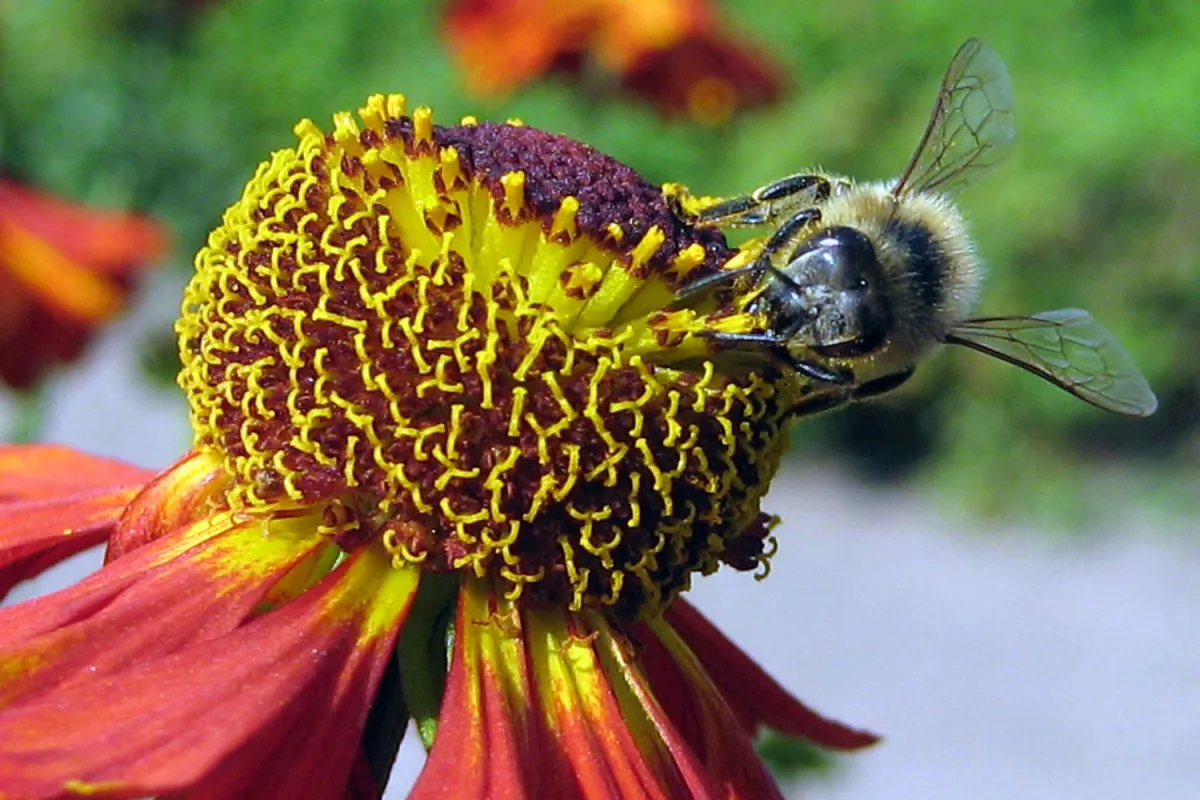Epigenetic buzz around bee genes

Recent research conducted at ANU sheds new light on the complex interaction of genetic and environmental factors which controls phenotypic polymorphism and behavioural plasticity.
The underlying non-genetic mechanism - referred to as epigenetics – can determine which genes are switched on or off or muffled, as well as controlling how and when all this happens. It does this using environmental cues, such as nutrition, smoking, drugs and childhood neglect, which alter gene activity without modifying the underlying DNA sequence.
Epigenetic phenomena are proving to be pivotal in our understanding of a range of conditions such as cancer, obesity and mental illness. However, these phenomena are notoriously difficult to study in humans or in mammalian laboratory animals.
To overcome the enormous technical challenges in understanding the epigenetic events underlying genome-environment interactions, a group led by Professor Ryszard Maleszka at the Research School of Biology has been using the Western honey bee as a powerful, yet easily manageable, experimental system.
In an article published in collaboration with U.S. colleagues, they show that the effects of diet are translated into differential gene expression in honey bees through metabolic signals and an epigenetic process called DNA methylation.
In honey bee larvae fed on royal jelly, metabolic processes send signals to the genome about the nutritional environment. These signals are then imprinted on the DNA through DNA methylation, a subtle chemical modification that does not affect the underlying DNA, but instead opens up variations on the genome, causing different characteristics to be expressed.
“Each gene has the capacity to produce a few proteins and DNA methylation makes the decision as to which variant of a gene is needed under a given set of conditions, leading to changes in development and behaviour” explains Professor Maleszka.
In the case of the honey bee, exposure to a diet of royal jelly results in larvae developing as highly fertile long-lived queen bees, whereas exposure to a normal sugar based diet results in the larvae developing as sterile short-lived worker bees.
“We are trying to understand the interface between the environment and the genome. There are ingredients in royal jelly that modify the expression of many genes including those that have been implicated in human diseases, making the honey bee an attractive model to unravel that interface.”
For example, ALK, a gene discovered in this study to be regulated by DNA methylation is instrumental in controlling the flow of energy and material for building cells in all animals.
“It is a very interesting gene because it is implicated in many cancers,” says Professor Maleszka.
But these results are still some way from the full solution. “At the moment there are more questions than answers,” says Professor Maleszka. “The more we understand about this gene and its epigenetic influences, then that will lead to better strategies for drug design.”
In a separate paper, the Maleszka lab provides compelling evidence that DNA methylation in honey bees is also used to control brain plasticity. They compared epigenetic modifications in the brains of honey bee workers involved in two distinct tasks - simple nursing duties inside the colony and cognitively demanding foraging activities. Each of these activities is performed in response to the social environment.
The results revealed more changes were correlated with task type, rather than with chronological age. Results also showed that individual colonies maintain distinct methylation patterns on their genome, suggesting that each colony might have a specific signature, by which individual members from different colonies can be distinguished.
This study improves our understanding of brain functioning and behavioural responses to external stimuli and reinforces the value of honey bees in the fast growing field of epigenetics.
Dr Sylvain Foret and Dr Robert Kucharski are also involved in epigenetic work with honey bees at RSB.
Papers highlighted in this article
1. Foret, S., Kucharski, R., Pellegrini, M., Jacobsen, S.E., Robinson, G.E., & Maleszka, R. (2012). DNA methylation dynamics, metabolic fluxes, gene splicing and alternative phenotypes in honey bees. Proceedings of the National Academy of Sciences USA. [Epub ahead of print]
2. Lockett, G.A., Kucharski, R., & Maleszka, R. (2012) DNA methylation changes elicited by social stimuli in the brains of worker honey bees. Genes, Brain and Behavior, 11, 235–242
This news story has been kept for historical purposes, and content may now be out of date.
